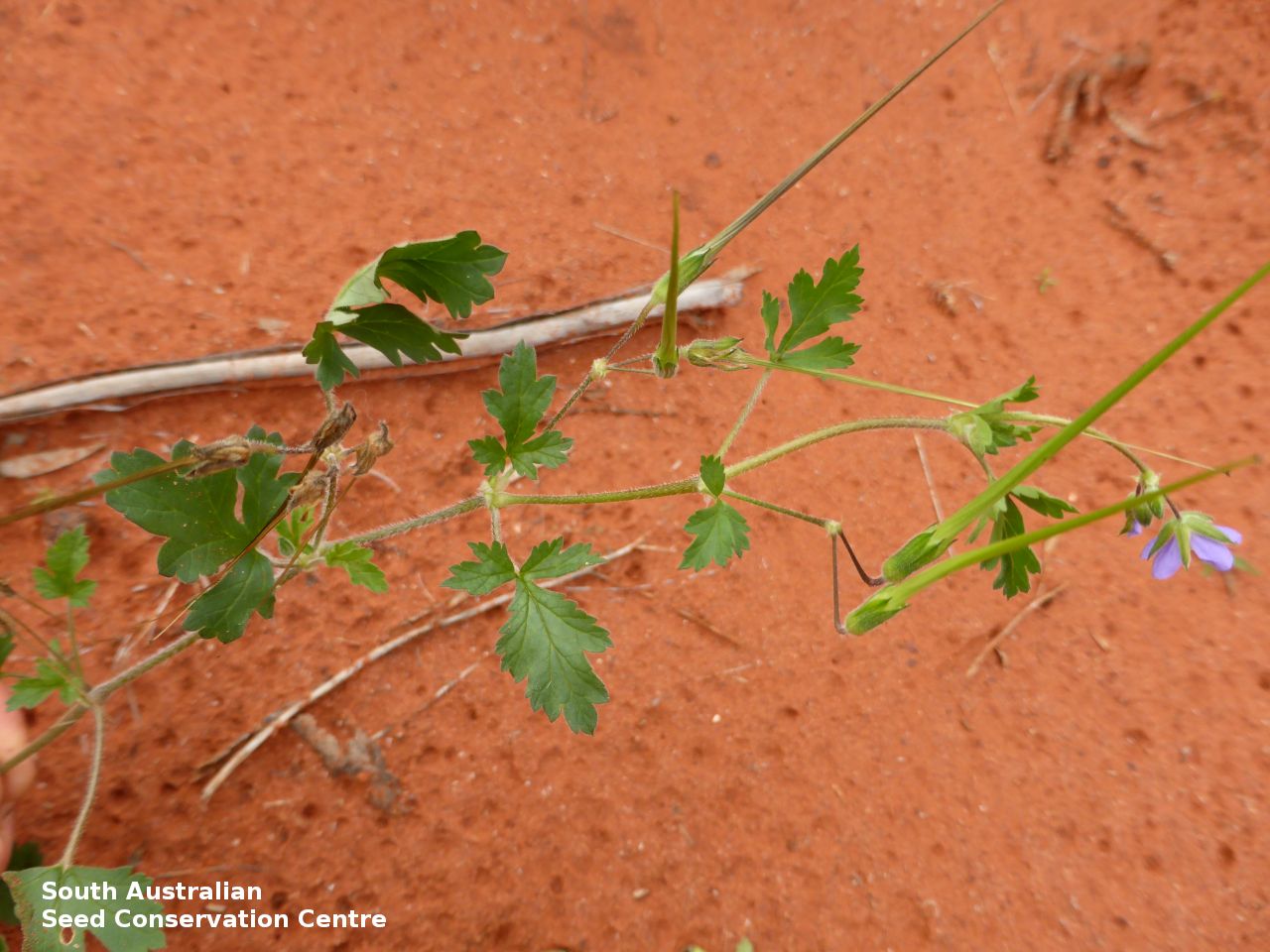
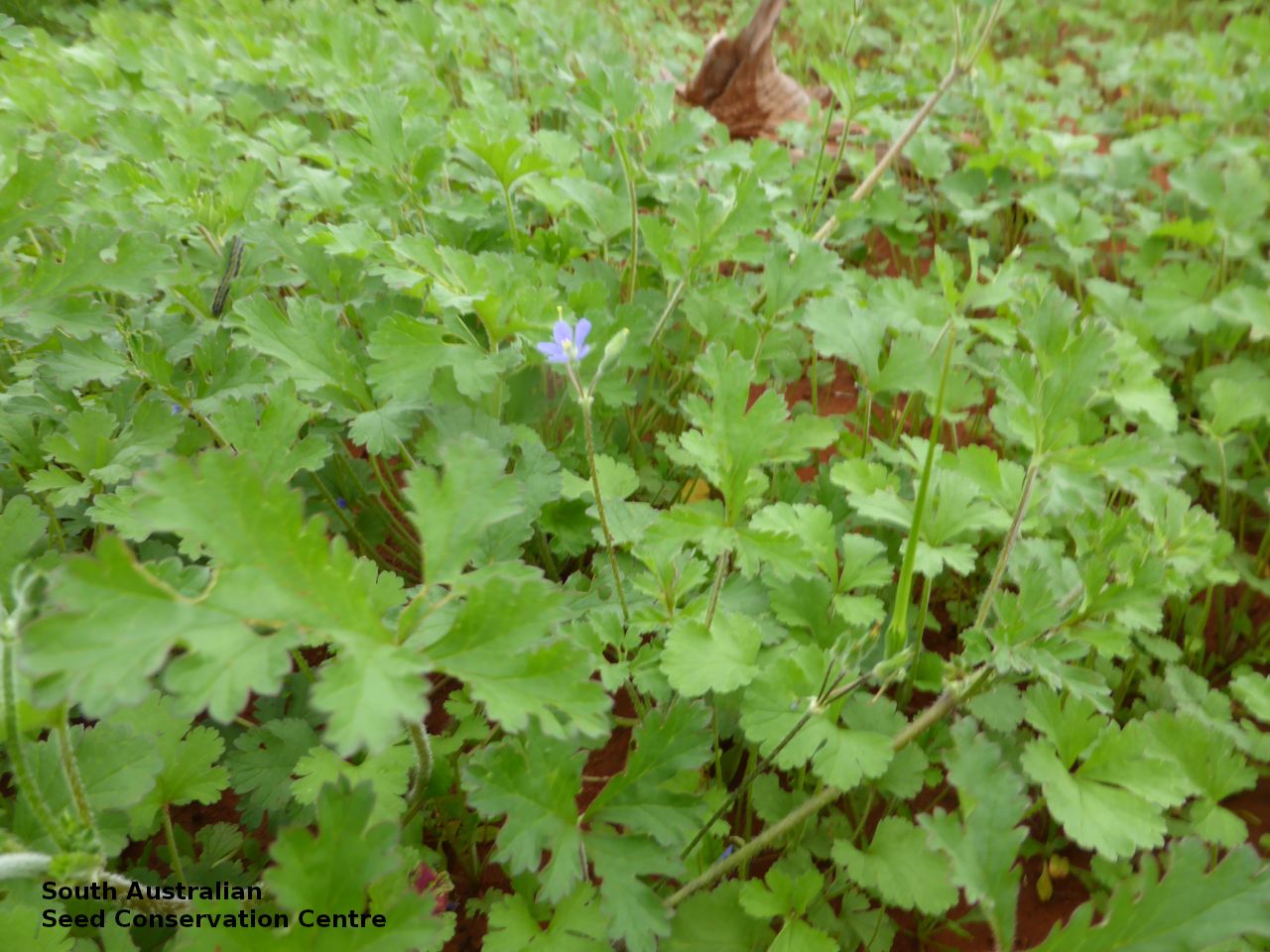
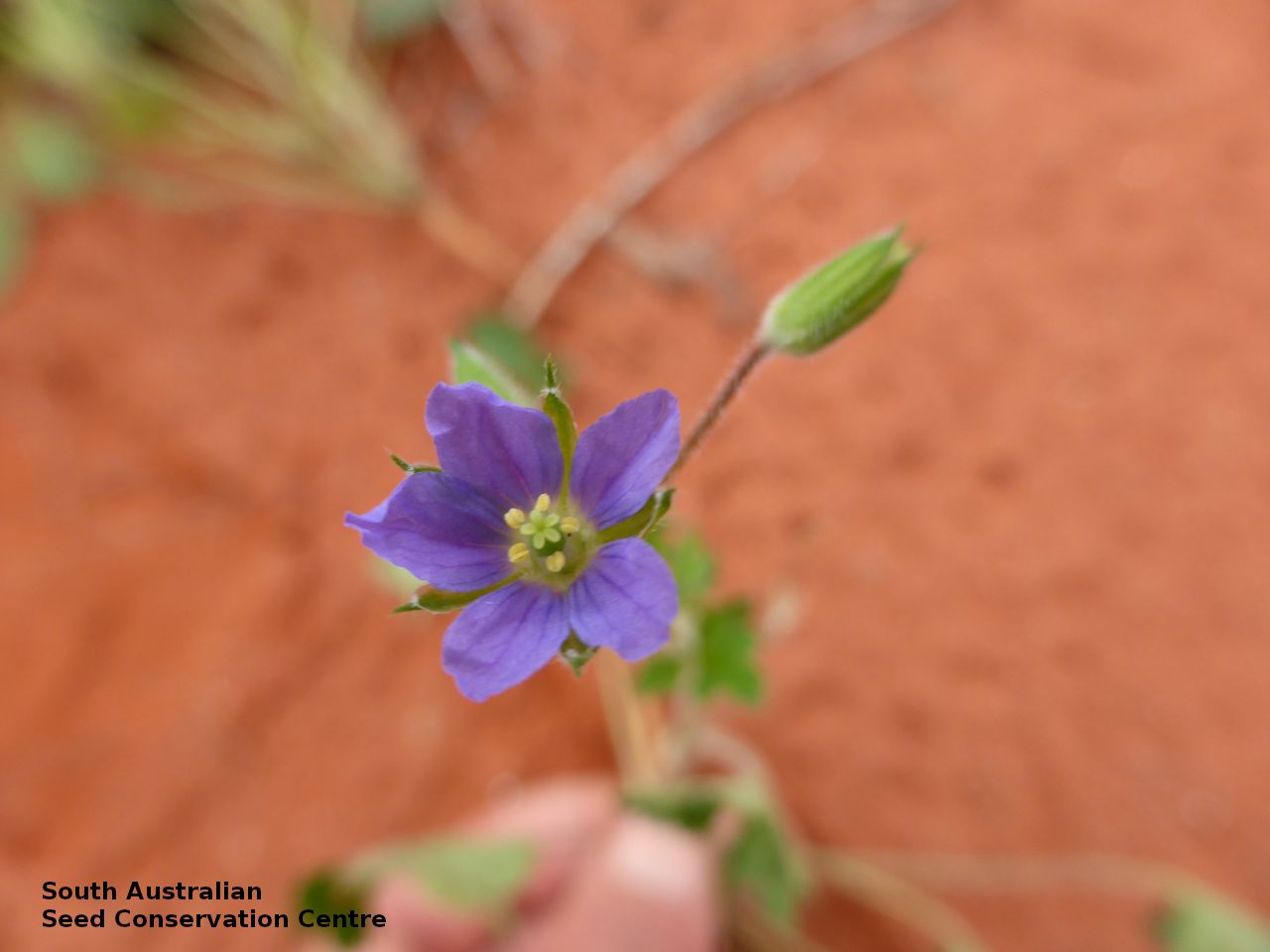
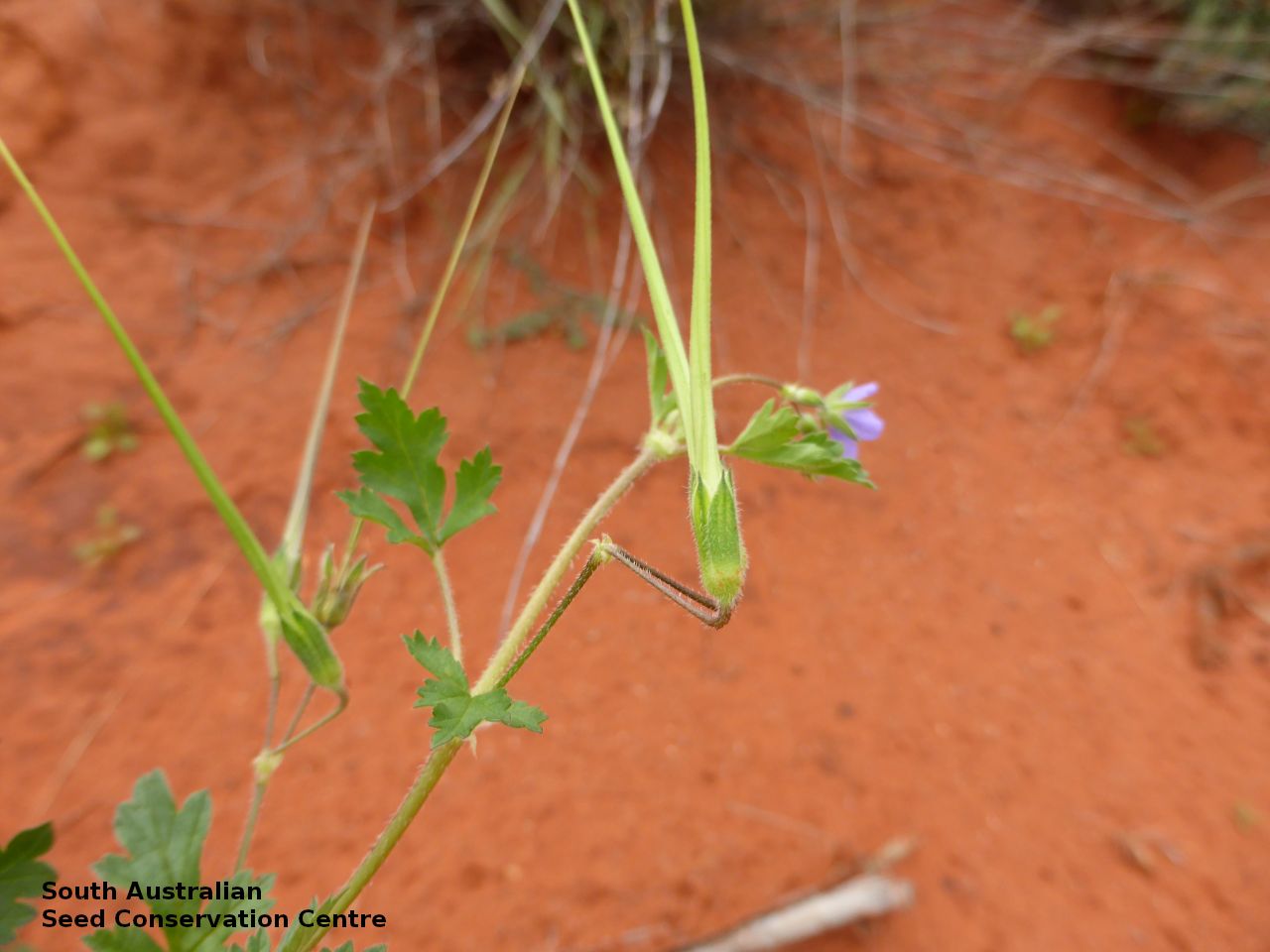
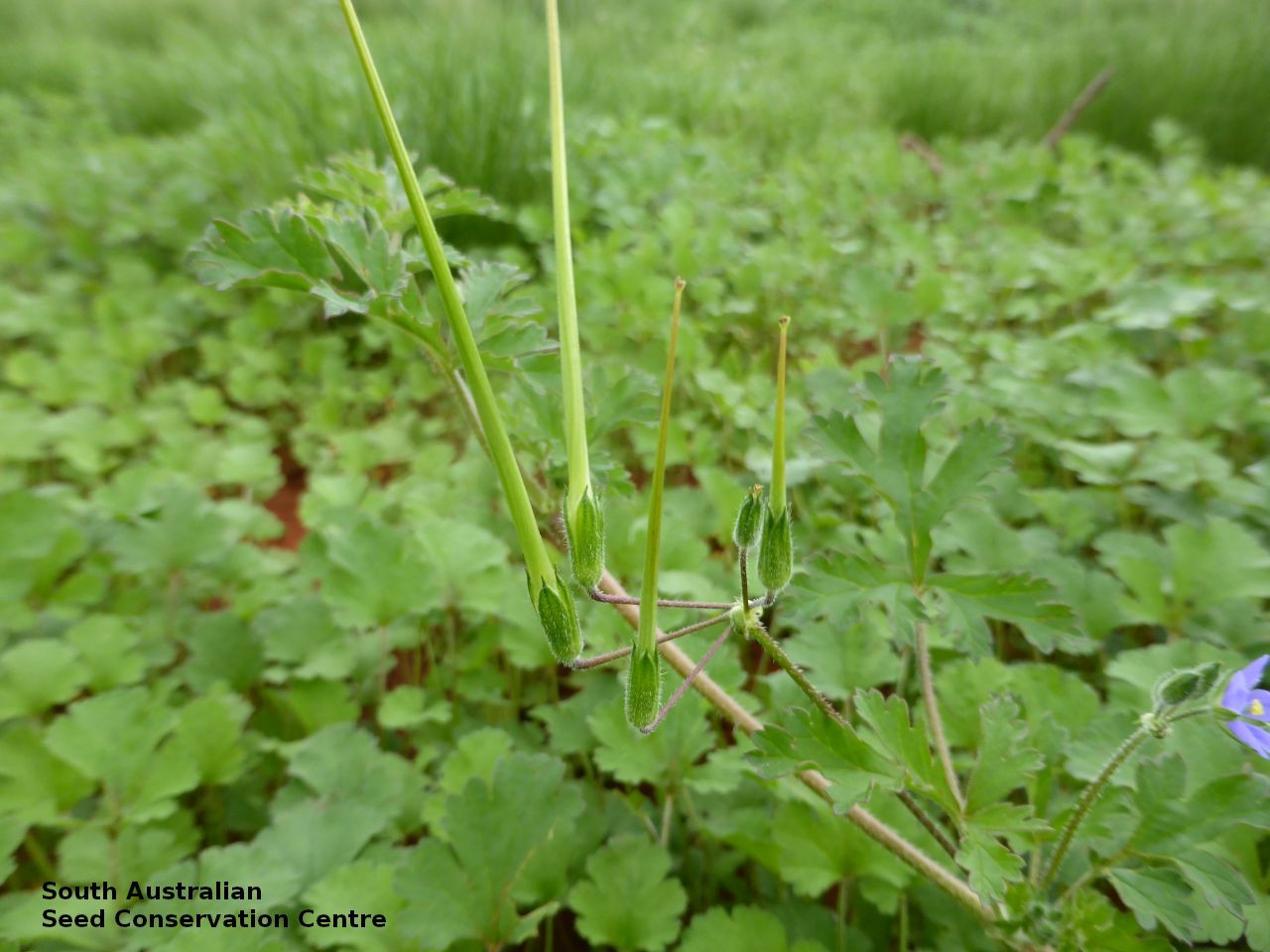
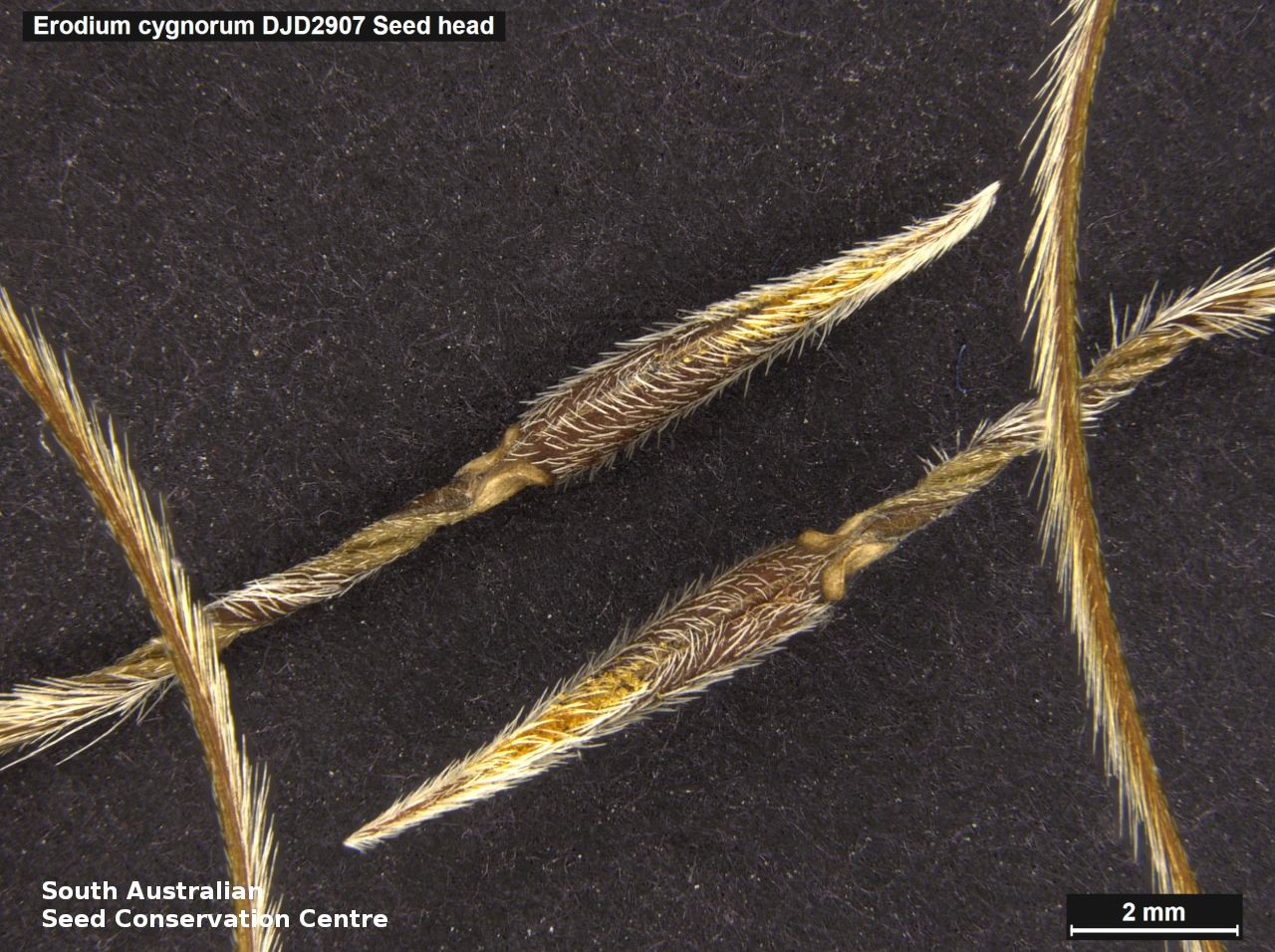

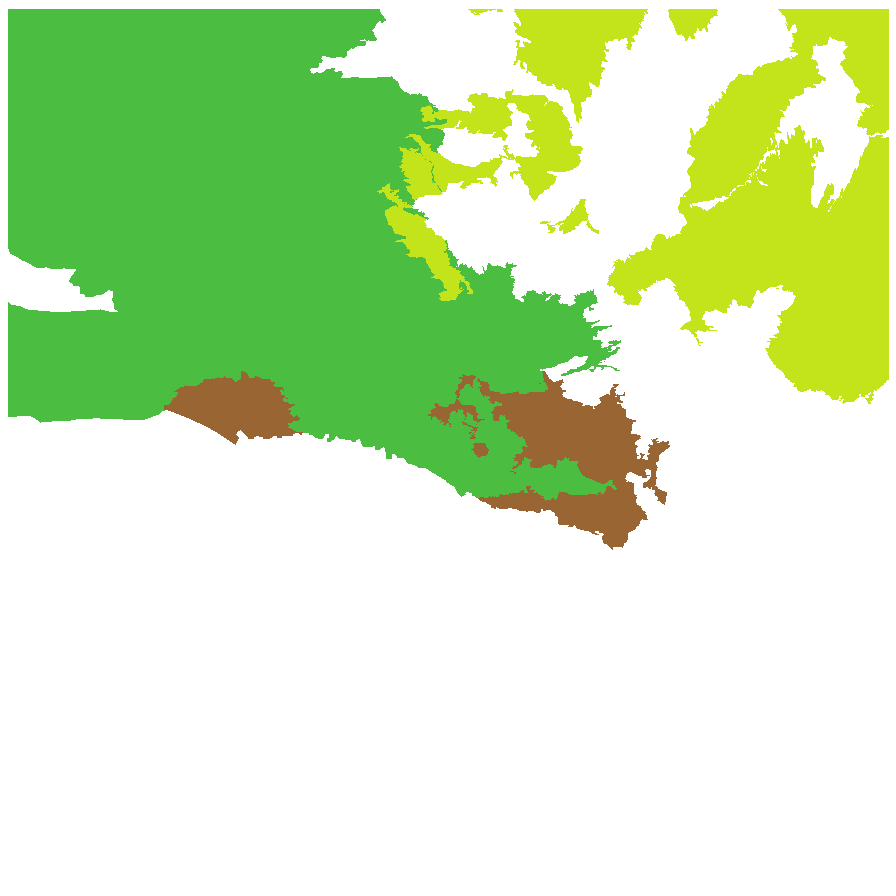
Prior names
Erodium angustilobum
Erodium cygnorum ssp. cygnorum
Common names
Blue Heron's bill
Blue Heron's-bill
Blue Geranium
Etymology
Erodium from the Greek 'erodios' meaning heron; alluding to the fruit resembling the head and beak of this bird. Cygnorum from the Latin 'cygnis' meaning a cygnet or young swan; possibly alluding to the shape of the flower and flower-stalk, bent like a swan's neck.
Distribution and status
Found in the northern part of South Australia, growing in a open areas. Also found in Western Australia, Northern Territory and Queensland. Native. Common in South Australia. Uncommon in Queensland. Common in the other states.
Herbarium regions: North Western, Lake Eyre, Nullarbor, Gairdner-Torrens, Eyre Peninsula
NRM regions: Alinytjara Wilurara, Eyre Peninsula, South Australian Arid Lands
AVH map: SA distribution map (external link)
Plant description
Decumbent to ascending perennial or annual herb to 50 cm high with stems covered in hairs. Leaves with 3 principal lobes, pubescent as the stems. Flowers in clusters of 2-6, rarely solitary, with blue to purple petals. Flowering between July and October. Fruits are long brown capsule. Seeds are brown ovoid seed to 6 mm long and 1 mm wide, covered in long white hairs and with a 12 cm long hairy awn-like attachment.
Seed collection and propagation
Collect seeds between September and December. Collect matured capsules, those that are turning brown and have exposed brown seeds. Place the capsules in a tray and leave to dry fro 1 to 2 weeks. If only seeds collected, no further cleaning is required. If other material is collected, use a sieve to separate unwanted material. Store the seeds with a desiccant such as dried silica beads or dry rice, in an air tight container in a cool and dry place. This species has physical dormancy that needs to be overcome for the seed to germinate (e.g. nicking or softening the seed coat).